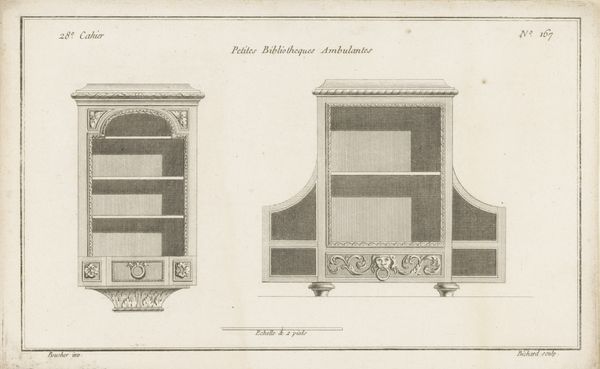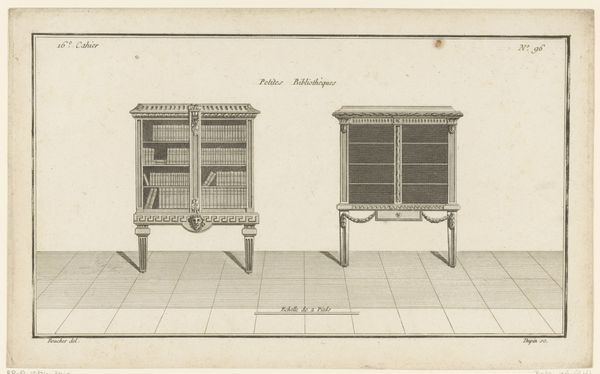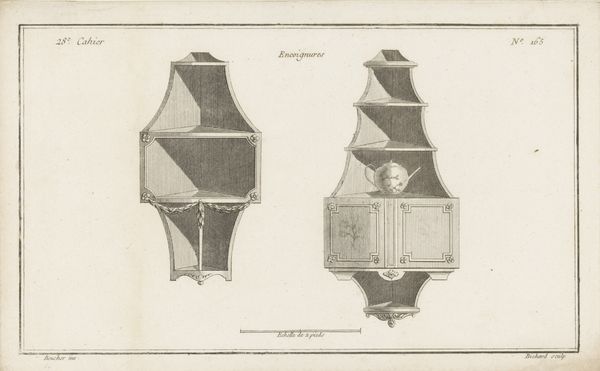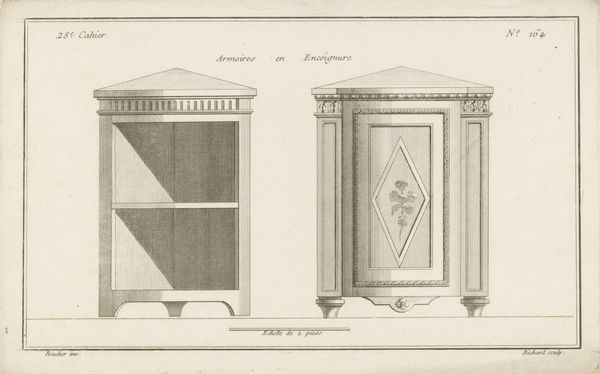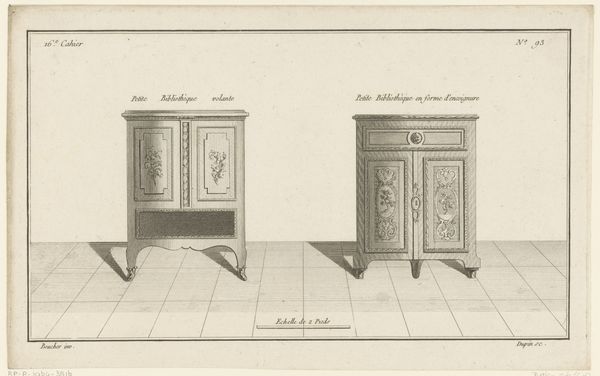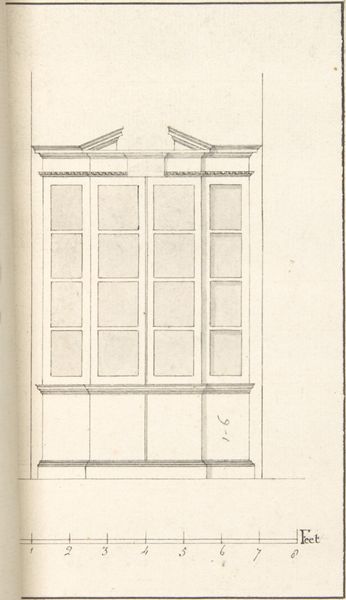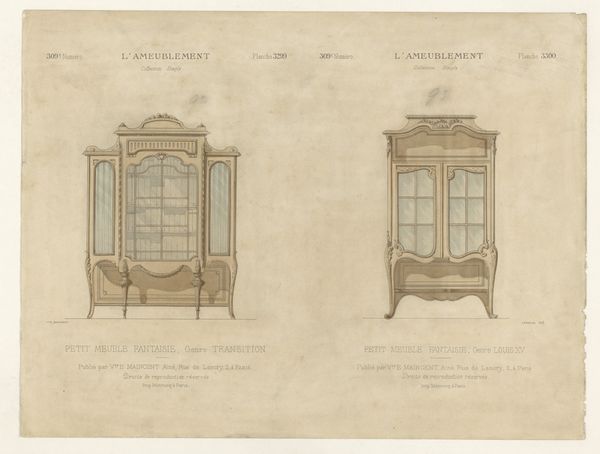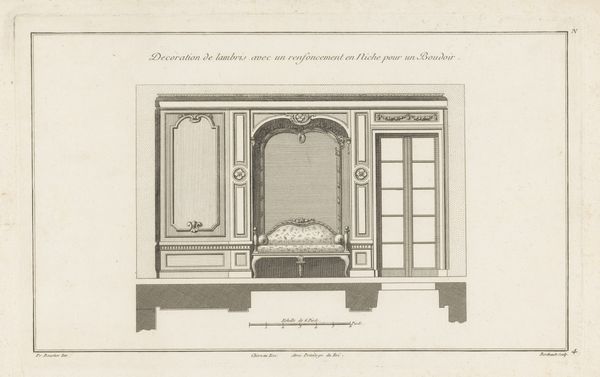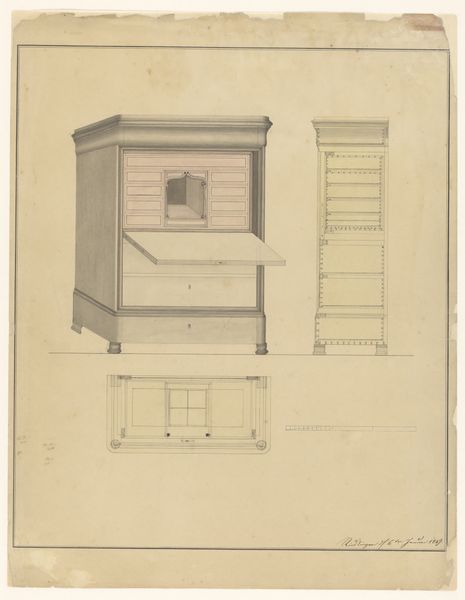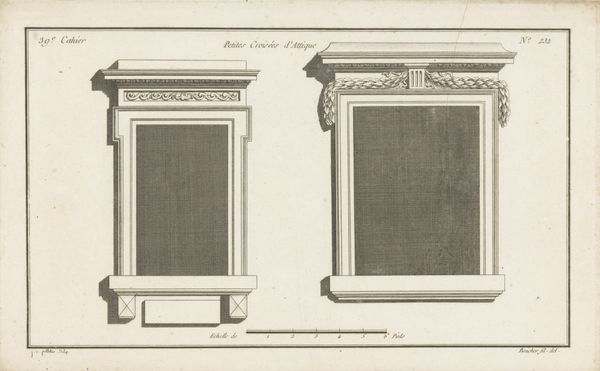
drawing, print, paper, engraving
#
drawing
#
neoclacissism
# print
#
paper
#
form
#
line
#
decorative-art
#
engraving
Dimensions: height 202 mm, width 325 mm
Copyright: Rijks Museum: Open Domain
Editor: This is “Twee boekenkasten,” or "Two Bookcases," a print from sometime between 1772 and 1779 by Jean-Baptiste Bichard. I’m struck by how…bureaucratic they appear. Very regimented and a tad austere despite the flourishes. What social function do you think something like this might have served? Curator: Well, it's Neoclassical, so immediately, we think about a return to order, reason, and civic virtue after the Rococo. The print being decorative suggests this ideal aesthetic seeps into everyday life, subtly promoting values associated with classical learning. What do you see in the presentation of two versions? Editor: The "regular" bookcase feels more…common, like a citizen's bookshelf, perhaps? While the curvier one looks fancier and more ornate, like the magistrate’s taste? Curator: Precisely! It represents status. And engravings like these served as a catalog, standardizing taste but also creating demand and delineating social strata. These bookcases embody and project not just knowledge, but power. Do you see the phrase "Petites Bibliothèques Ambulantes?" Editor: "Small, mobile libraries"...interesting, almost as if reading should be a fundamental civic act. Curator: The intention was indeed that citizens should use art. Bichard provides a template for elevating one's social standing. It shows that owning books—and owning the *right* sort of bookcase—signals erudition, culture and therefore justifies their elevated position within society. Editor: It's like an advertisement, a little bit? Not just for furniture, but for an aspirational lifestyle connected to power and intellect? Curator: Exactly. This image wasn’t just about selling bookshelves, it was about propagating and reinforcing a specific social hierarchy. What are your take-aways? Editor: That even something as seemingly simple as furniture design can reveal the values and power dynamics of its time! Thanks. Curator: Thank you for opening my mind to this work in ways I had not considered before.
Comments
No comments
Be the first to comment and join the conversation on the ultimate creative platform.

